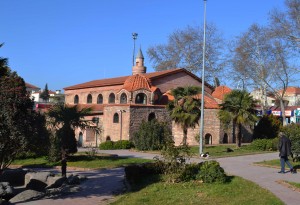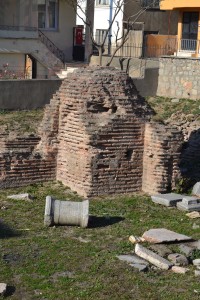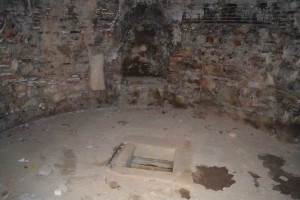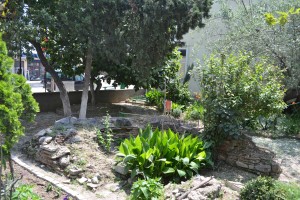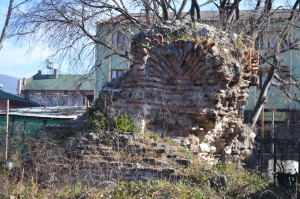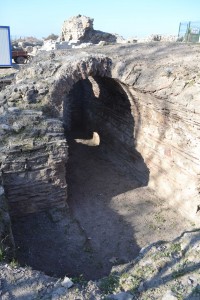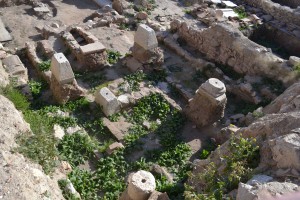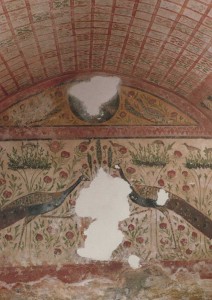Nicaea was the home of the Greek Patriarchate during the Latin occupation of Constantinople. Its fame has lasted due to the persistence of the Nicene Creed in the liturgy. This is a heavily edited statement of the outcome of the First Ecumenical Council of 325, held to discuss the nature of the Christ. It was determined that he was begotten, not made, that is, that he was of the substance of the Father, rather than made anew. This disposed of the Arian Controversy, thereafter called the Arian Heresy.
That Council was held in the Senatus Palace complex of Constantine I, which appears to have sunk beneath the waters of Lake Iznik in various episodes of tectonic activity, particularly the earthquake of 740. The foundations of a basilica were discovered in 2014 about 20 metres from the current shoreline. The lake is fertile territory for future aquatic archaeological investigation. However, the terrestrial city has plenty of interest.
The thirteenth century flowering of Nicaea as the home of the exiled Patriarchate led to the construction of a number of churches and the repair of existing ones. However, after Ottoman conquest, the city of Iznik was impoverished and underpopulated. The churches gradually became more and more dilapidated until the Turkish War of Independence. Iznik was in the path of the Turkish Army which, scenting victory, drove the hapless Greek population towards the Aegean coast. Iznik, having a large Christian presence, was a target. All churches were destroyed with the exception of Aya Sofya, which had been converted into a mosque.
New techniques are resulting in the discovery of churches that had disappeared from knowledge. A basilica, possibly the one in which the Nicene Creed was formulated, was recently found in shallow water in İznik Gölü (40.429123, 29.710134). Another church was rediscovered in the north-west of the town (40.433715, 29.717429) with a combination of magnetic mapping, ground-penetrating radar, gravimetry and electric resistivity tomography. There are many more churches to rediscover.
1. Hagia Sophia / Iznik Ayasofya Camii
2. Church of the Dormition (Koimesis)
3. Böcek Ayazması
4. Iznik Church 1, Istanbul Gate / Hagios Tryphonos Church / Ayatrifon Kilisesi
5. Iznik Church 2, Yenişehir Gate / Hagios Tryphonos Church / Ayatrifon Kilisesi
6. Church near Iznik Theatre
7. Church in excavations behind the Archaeological Museum
8. Elbeyli Byzantine Tomb.
Rabbel, W. et. al. (2014) Discovey of a Byzantine Church in Iznik/Nicaea, Turkey: An Educational Case History of Geophysical Prospecting with Combined Methods in Urban Areas. Archaeological Prospection. Wiley Online Library. Available online at: https://www.academia.edu/8489685/Discovery_of_a_Byzantine_Church_in_Iznik_Nicaea_Turkey Accessed 15th June 2016.
Powell, E. (2014) Sunken Byzantine Basilica. Archeology. Archeological Institute of America. Available online at: http://www.archaeology.org/issues/161-1501/features/2789-turkey-submerged-byzantine-basilica Accessed 15th June 2016

Categories: Uncategorized | No Comments »
